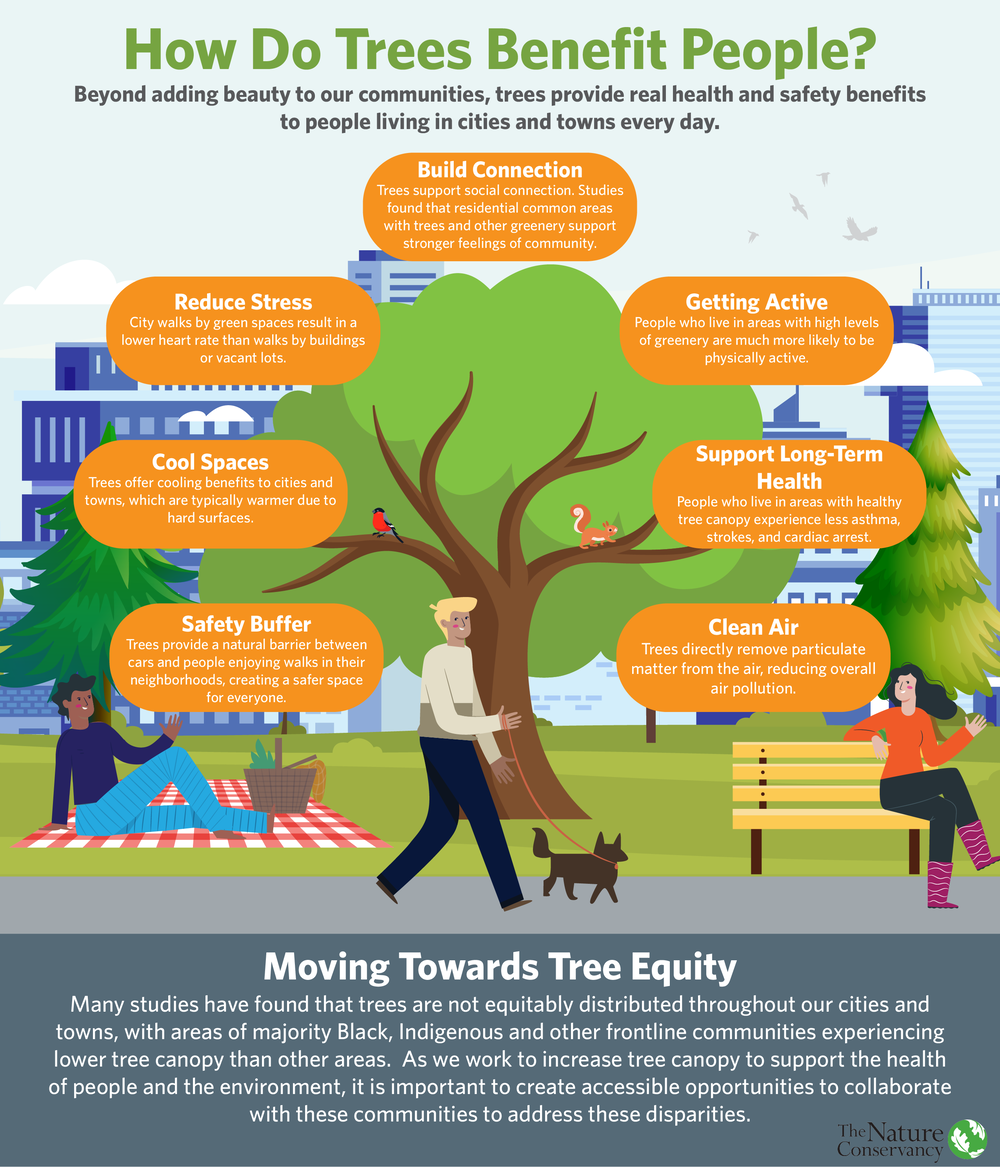Trees provide a wide variety of benefits. See the graphic below to learn what trees do for you every day!

To learn more about what YOU can do for trees, check out the resources listed below:
How Do Trees Benefit People? Alternative Text and Sources
Beyond adding beauty to our communities, trees provide real health and safety benefits to people living in cities and towns every day.
-
Safety Buffer: Trees provide a natural barrier between cars and people enjoying walks in their neighborhoods, creating a safer space for everyone. Source: https://www.orcity.org/planning/trees-oregon-city
-
Cool Spaces: Trees offer cooling benefits to cities and towns, which are typically warmer due to hard surfaces. Source: https://www.baltimoresun.com/opinion/op-ed/bs-ed-trees-20130528-story.html
-
Reduce Stress: City walks by green spaces result in a lower heart rate than walks by buildings or vacant lots. Source: https://www.nrs.fs.fed.us/pubs/48059
-
Build Connection: Trees support social connections. Studies found that residential common areas with trees and other greenery support stronger feelings of community. Source: http://illinois-online.org/krassa/ps450/Readings/Kuo%20Fertile%20Ground%20Innercity%20Common%20Space.pdf
-
Getting Active: People who live in areas with high levels of greenery are much more likely to be physically active. Source: https://depts.washington.edu/hhwb/Thm_ActiveLiving.html
-
Support Long-Term Health: People who live in areas with health tree canopy experience less asthma, strokes, and cardiac arrest.Source: https://www.srs.fs.usda.gov/pubs/ja/2013/ja_2013_donovan_001.pdf
-
Clean Air: Trees directly remove particulate matter from the air, reducing overall air pollution. Source: https://www.nature.org/en-us/what-we-do/our-insights/perspectives/how-urban-trees-can-save-lives/
-
Moving Towards Tree Equity: Many studies have found that trees are not equitably distributed throughout our cities and towns, with areas of Black, Indigenous and other frontline communities experiencing lower tree canopy than other areas (Source: https://www.researchgate.net/publication/46559783_Street_Trees_and_Equity_Evaluating_the_Spatial_Distribution_of_an_Urban_Amenity). As we work to increase tree canopy to support the health of people and the environment, it is important to create accessible opportunities to collaborate with these communities to address these disparities.